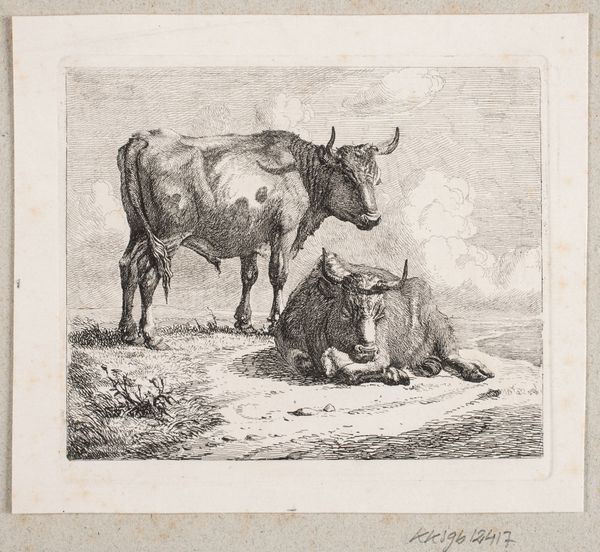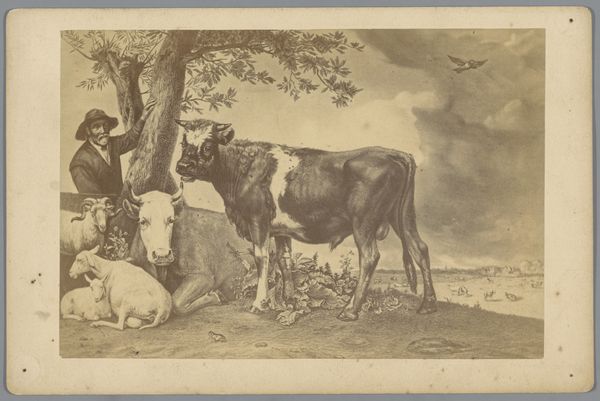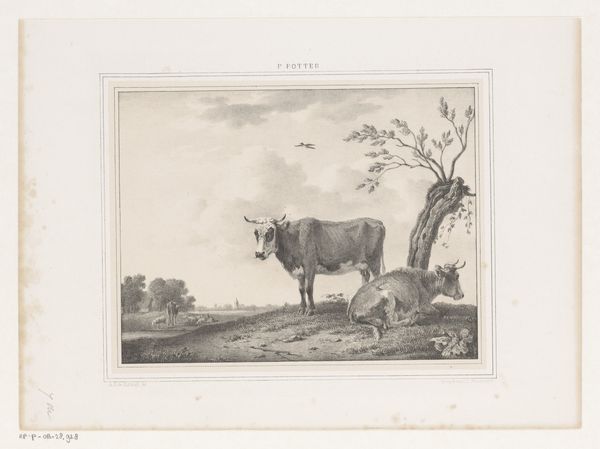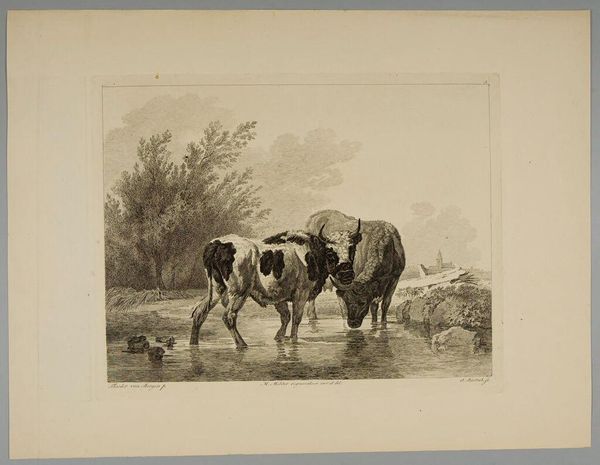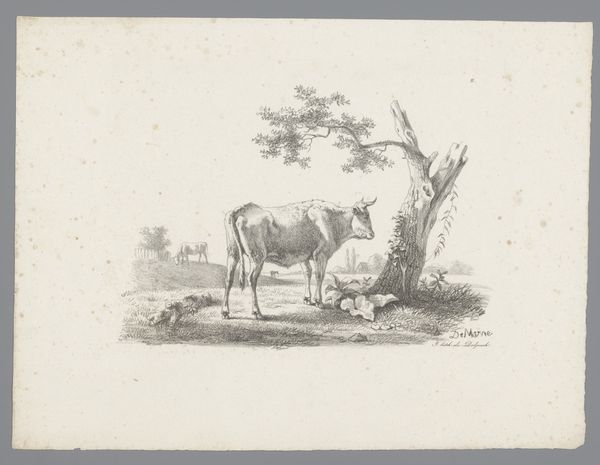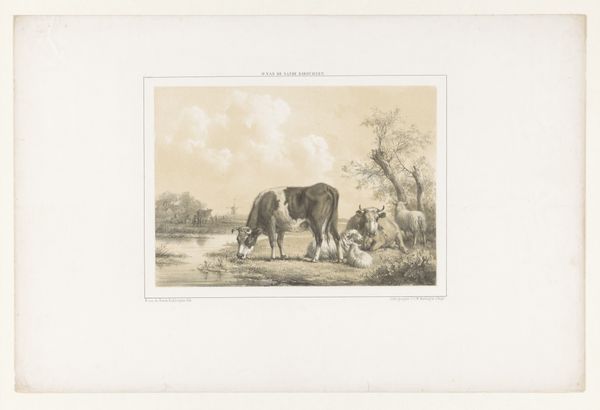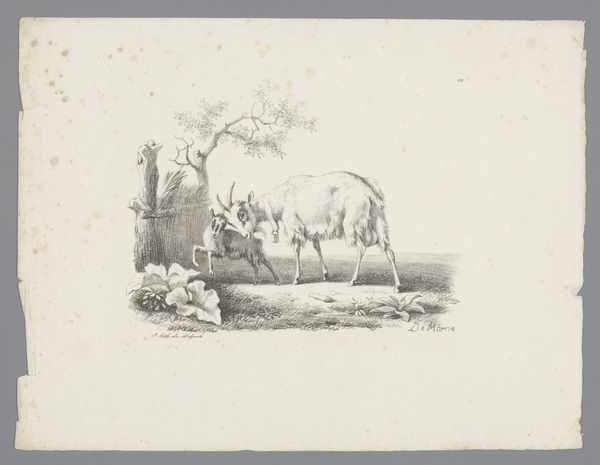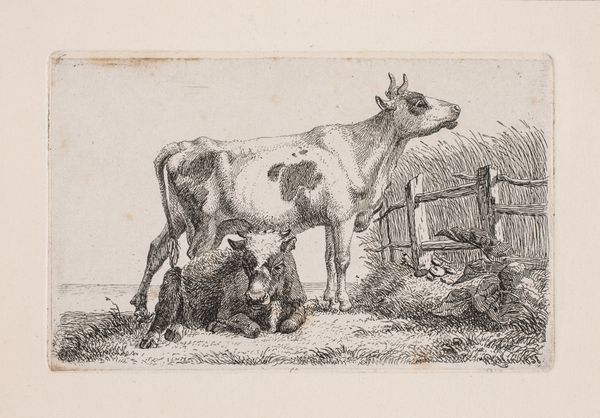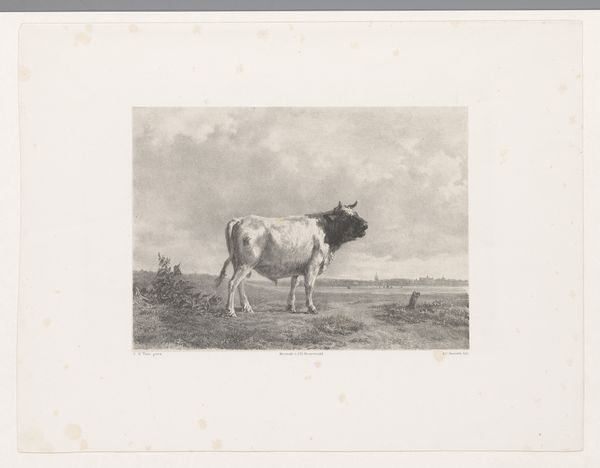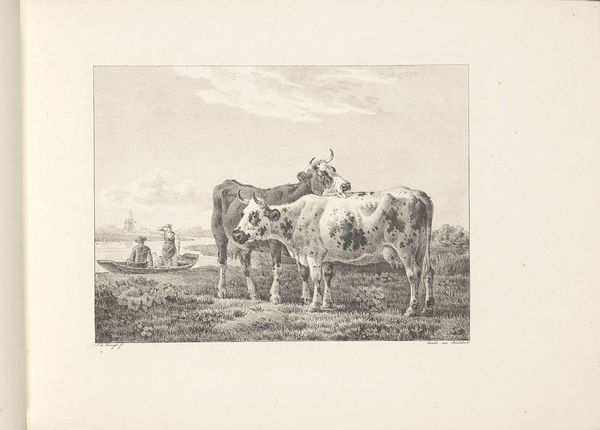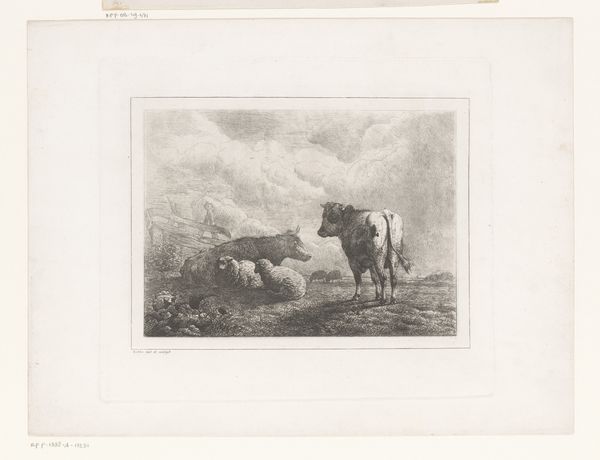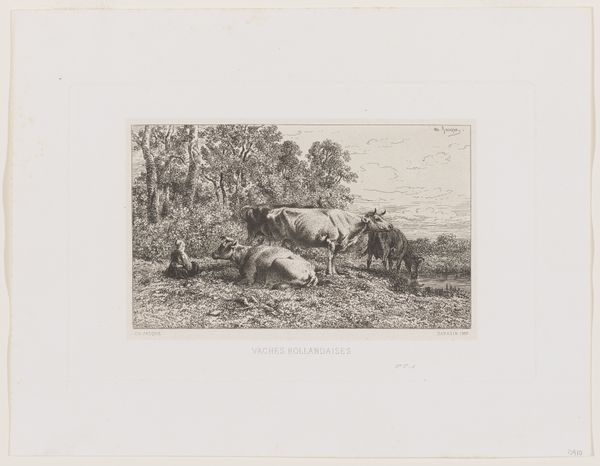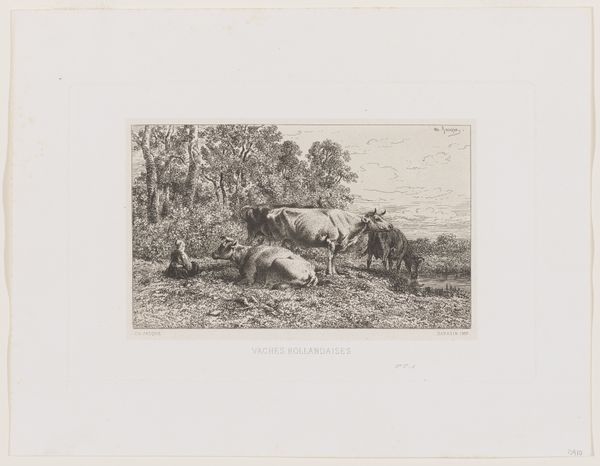
Fotoreproductie van een schilderij van Rosa Bonheur van runderen in een landschap c. 1890 - 1910
0:00
0:00
print, photography
# print
#
landscape
#
photography
#
genre-painting
#
realism
Dimensions: height 56 mm, width 93 mm
Copyright: Rijks Museum: Open Domain
Editor: So, this is a photographic reproduction of a painting by Rosa Bonheur, made sometime between 1890 and 1910. It depicts cattle in a landscape. It feels quite pastoral and still, a little melancholic perhaps, with its sepia tones. What strikes you about this particular print? Curator: Well, considering its context, the mechanical reproduction of Bonheur's painting offers a crucial insight into the consumption of art in the late 19th century. The original, an oil painting, involved considerable labor, the processing of pigments, the weaving of canvas. This print, however, made possible through photography and printing, democratizes access, even as it alters the value and meaning attached to the image. How does the shift in material, from oil on canvas to photographic print, impact our understanding of Bonheur's work and its audience? Editor: That's fascinating. It becomes less about the individual skill of the painter, and more about mass distribution, right? Curator: Exactly. It challenges the traditional boundaries between "high art," with its emphasis on the unique and handcrafted, and more accessible forms of visual culture tied to mechanical production. Were these prints individually crafted? Who consumed them and how would their placement and the mode of circulation impact their perceived value as commodities, in relation to other decorative pieces and the laboring landscape outside their windows? Editor: So, we're not just looking at an image of cows, but also the means of its production and circulation as an object. I guess I never considered photography through this lens before. Curator: Precisely! It prompts us to ask crucial questions about value, labor, and the democratization of art through its materiality. Editor: Thank you, that really gave me a new appreciation for the piece! Curator: Indeed, thinking materially reveals layers of meaning beyond the surface of the image itself.
Comments
No comments
Be the first to comment and join the conversation on the ultimate creative platform.
